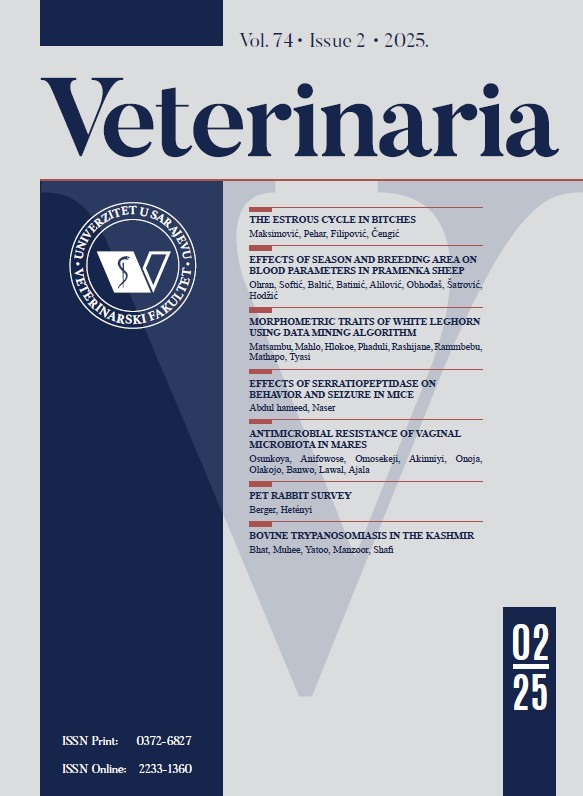Antimicrobial resistance in Escherichia coli isolates from cattle and poultry in Algeria
DOI:
https://doi.org/10.51607/22331360.2022.71.3.311Keywords:
Antimicrobial resistance, cattle, Escherichia coli, eastern Algeria, poultryAbstract
Worldwide, antimicrobial resistance has been increasingly reported from various sources and it is currently a serious threat for human and animal health. In Algeria, there is a significant lack of data on antimicrobial resistance in livestock. Therefore, we carried out this study in order to evaluate the antimicrobial susceptibility as well as the occurrence of extended spectrum beta-lactamase (ESBL) production in Escherichia coli collected from several farms located in eastern Algeria. One hundred sixty-two fecal samples from cattle and poultry were collected and analysed. Samples were streaked on Mac Conkey agar, and E. coli isolates were identified by API 20E system. Antimicrobial susceptibility was performed according to CLSI guideline using a panel of 12 antibiotics. In total, 140 E. coli isolates were collected, and high rates of resistance were observed for ampicillin (90.71%), cephalothin (74.28%), tetracycline (68.57%), trimethoprim-sulfamethoxazole (62.14%), nalidixic acid (58.57%), ciprofloxacin (55.71%), kanamycin (52.86%), amoxicillin/clavulanic acid (52.14%), chloramphenicol (47.86%), and nitrofurantoin (40.71%). However, moderate rate was observed for cefotaxime (27.14%) and three avian ESBL-producing isolates were detected. Co-resistance analysis revealed 56.59% multi-drug resistant isolates in cattle and 100% in poultry. These findings are alarming and highlight that E. coli remains a potential threat for the transmission of antibiotic resistance in animals, humans and even the environment.

Downloads
Published
How to Cite
Issue
Section
License
Copyright (c) 2022 Djanette Barour, Mohamed Salah Abbassi, Oussama Amara, Rayane Benmabrouk

This work is licensed under a Creative Commons Attribution 4.0 International License.







